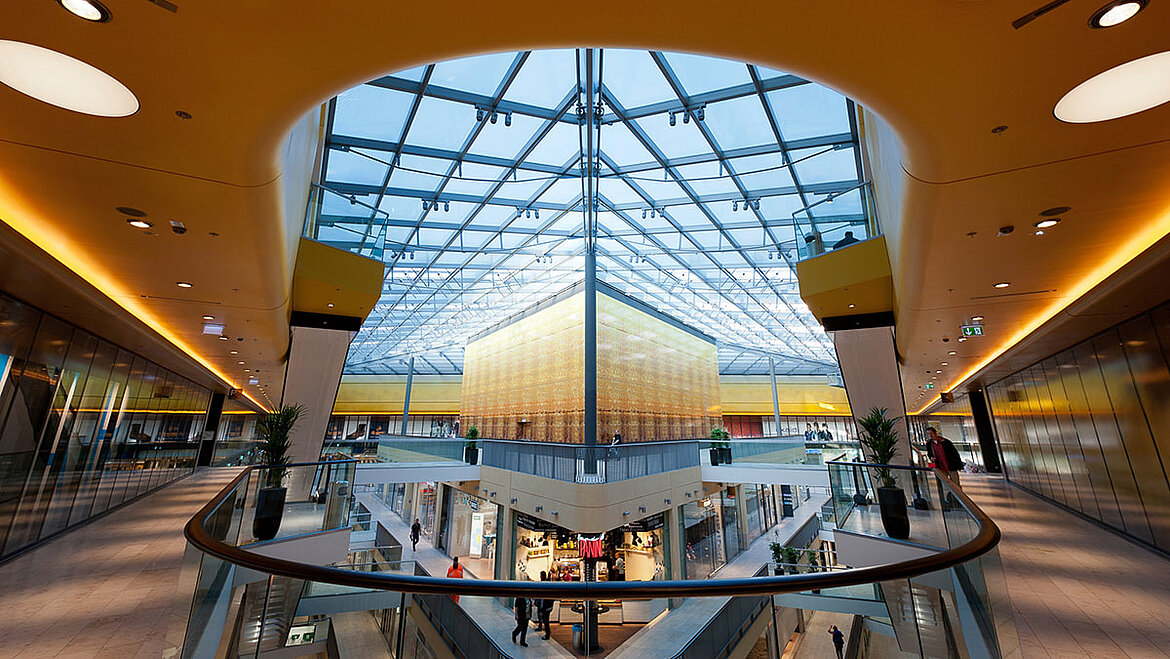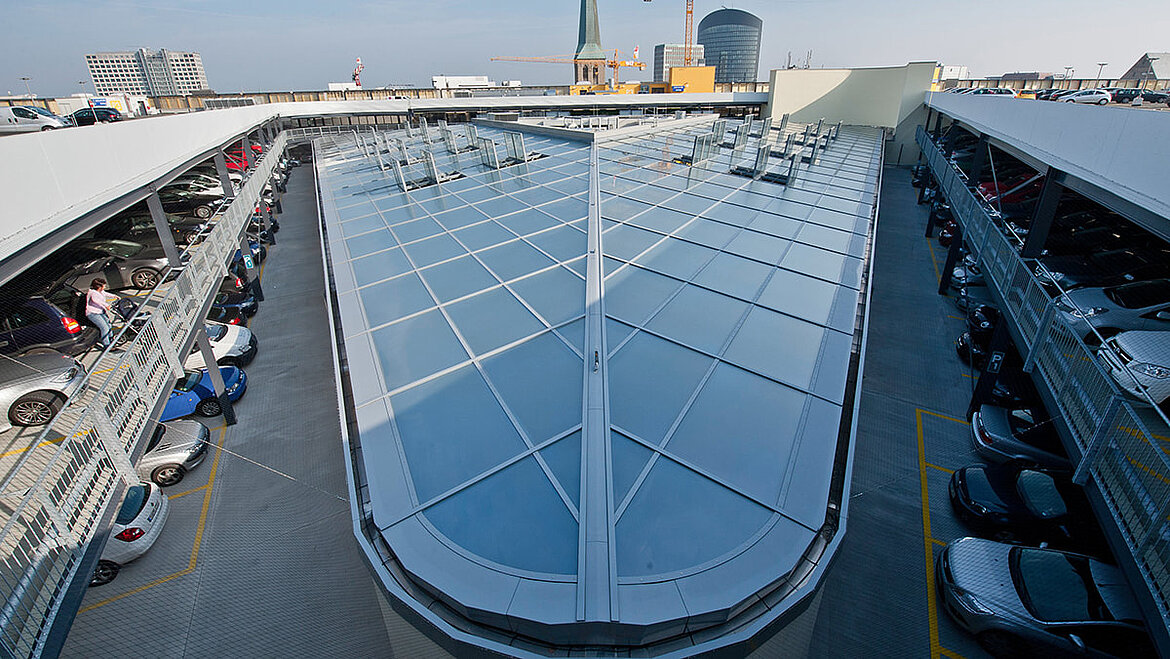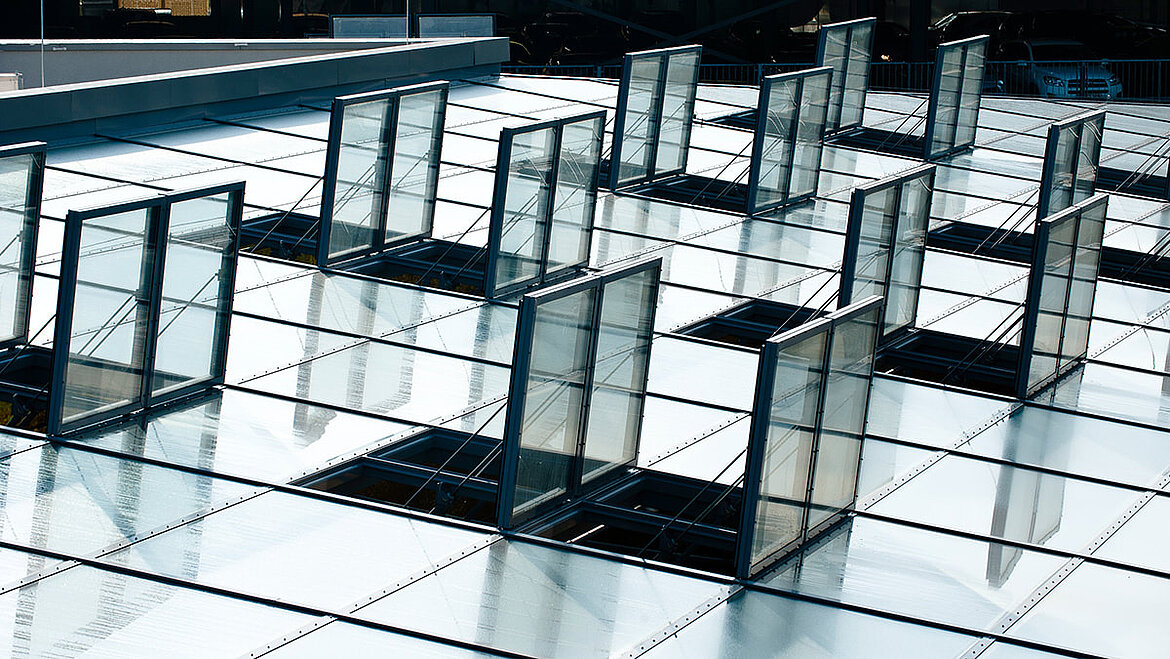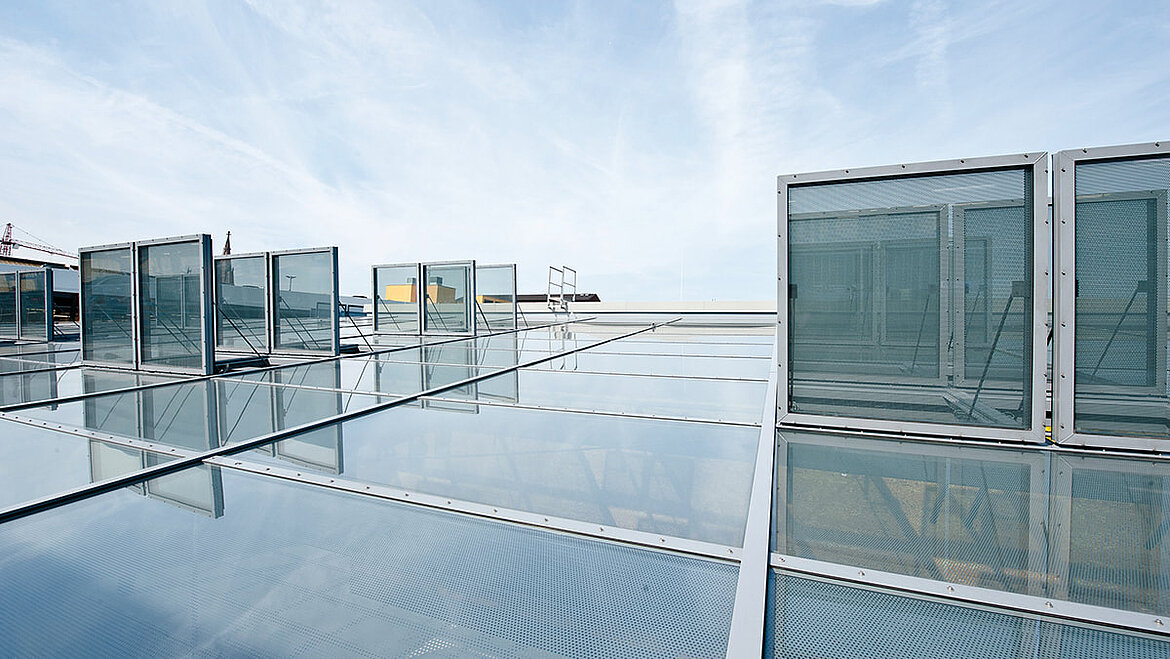How to combine appearance and security in shopping centres with SHEV systems

The 2300 square meter glazed roof area of the Thier Gallery in Dortmund consists of three pent roofs and a rotunda. It spans the entire area of the shopping centre's main aisles. Since a flood of daylight enters the building through the glass roof, the guests feel as if they are on an open street.
116 pneumatically operated flap systems also guarantee natural ventilation and smoke extraction in case of fire. The visual requirements were high, as the smoke and heat ventilation devices were to be integrated as unobtrusively as possible into the glass roof. Now they combine appearance and security in the shopping centre.
Meeting technical requirements for fire protection elegantly

In practice, this meant that the SHEV sashes should correspond as closely as possible to the size of the grid of the fixed glazing, so that no drives or wind deflectors are visible. The natural smoke and heat exhaust ventilators (NSHEVs) serve not only for smoke extraction but also for daily ventilation and can be individually controlled by the building management system depending on the weather, time of day or the number of visitors.
Above the rotunda, the SHEV sashes were installed in the size of the grid. But on the mono pitch roofs, where the glass grid was larger, a division into two fields was essential. Although the sash sizes were still enormous, they remained within the system test of the selected type.
Since the large sashes could not cope with the required lifting height and opening time, the use of chain thrust drives was not possible. It was also not possible to reduce the size of the sash grid, as this would disturb the visual appearance much more. Therefore, the planners decided to use the somewhat more conspicuous pneumatic cylinders. These enable large lifting heights and lifting forces with short opening times.
Individual solutions for smoke and heat ventilation
Normally, such large wings, which are almost flush with the surrounding glass roof and hardly open more than 90 degrees, require very high wind deflectors. But favourable circumstances made these unnecessary: The glass roofs were surrounded by higher parking decks so that architects and fire protection planners could rule out crosswind disturbances. Regarding the control system, the decision to use pneumatic cylinders and the requirements for the ventilation system resulted in additional expenditure. A redundant compressor system with buffer storage tanks provides fail-safe energy. A separate control system provides for the sequence automation of smoke extraction and ventilation, as it is linked to the building management system via Modbus.
Even if a great deal can be realized, the sizes of SHEV units are still limited. An individual solution must therefore be found for each building because the scope varies depending on the opening system. Even if more complex systems of SHEV in shopping centres are required for use in daily ventilation, pneumatic systems offer large lifting heights despite high loads with short opening times. Especially in large construction projects, such modifications can be implemented quite economically.


Intelligent SHEV systems from LAMILUX
In this case, the glass roofs and smoke and heat exhaust ventilation systems come from the Rehau-based family company LAMILUX. Even if the elegant design of glass roofs is convincing in everyday life, intelligent systems are essential, especially in the event of fire. LAMILUX pays attention to the necessary safety precautions in all its products, which can save lives in an emergency. Smoke lifts in flat roof windows, rooflight domes and continuous rooflights open within seconds as smoke increases and allow smoke and heat to escape. A solution can be found for every skylight to provide more safety in case of fire.

